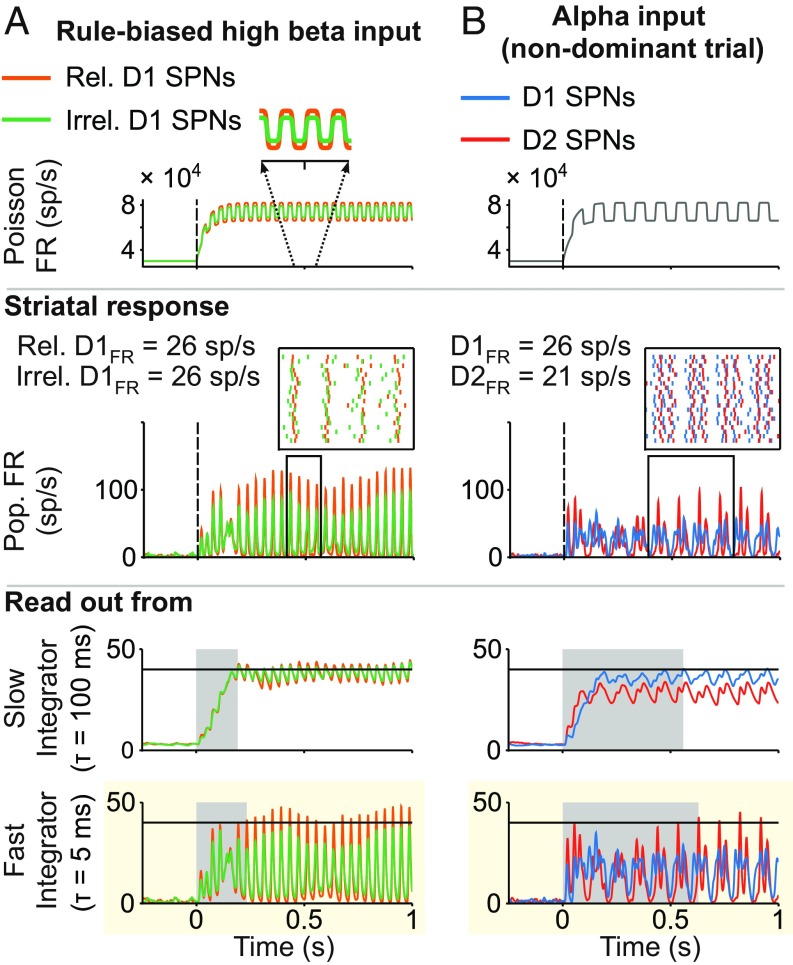Fig. 5.
Striatal processing of rhythmic cortical inputs involved in rule-based decisions. (A) Rule-based biased competition between GO pathways: stimulus-driven high beta rhythmic input from PFC biases action selection. (Top) Rate of the Poisson process underlying the stochastic high beta oscillatory input to the striatal circuit. The frequency (high beta) and distinct amplitude of the oscillatory input to SPNs (higher for relevant SPNs; in Inset) are constrained by reported synchronous activity in PFC (details are in the text). The same input targets D1 and D2 SPNs. (Middle) Population FR [instantaneous firing rate (iFR), the amplitude of which is a measure of local population synchronization]. (Inset) Raster activity of (n = 20) relevant and irrelevant D1 SPNs (the time window is indicated by the black frame in Middle). (Bottom) Downstream readout of the activity of D1 SPNs using the distinct integration timescale. Only fast timescale integration shows a reliable bias in favor of the relevant GO action (highlighted with the yellow background). Response time is shaded in light gray. Response threshold is at 40 sp/s (solid horizontal lines). (B) Striatal dynamics toward the NO-GO pathway favored by alpha oscillatory inputs (present in PFC ensembles in nondominant trials; details are in the text). (Top) Rate of the Poisson process underlying the stochastic alpha oscillatory input to the striatal circuit. (Middle) Population FR (iFR). (Inset) Raster activity of (n = 20) D1 and D2 SPNs (the time window is indicated by the black frame in Middle). (Bottom) Downstream readout of the activity of SPNs using the distinct integration timescale. For the alpha rhythm to mediate inhibitory control, an NO-GO bias should prevail. This is only the case through the fast integration timescale (highlighted with the yellow background). Response time is shaded in light gray. Response threshold is at 40 sp/s (solid horizontal lines).

